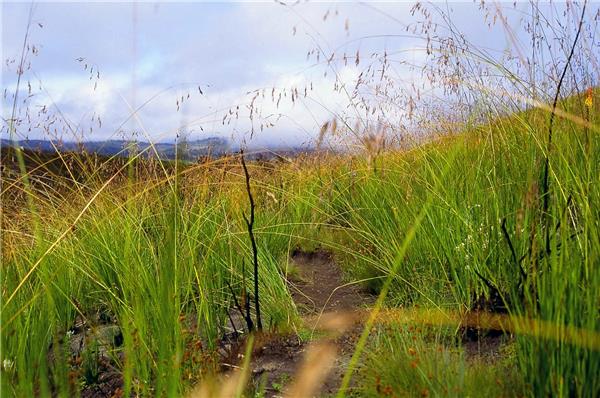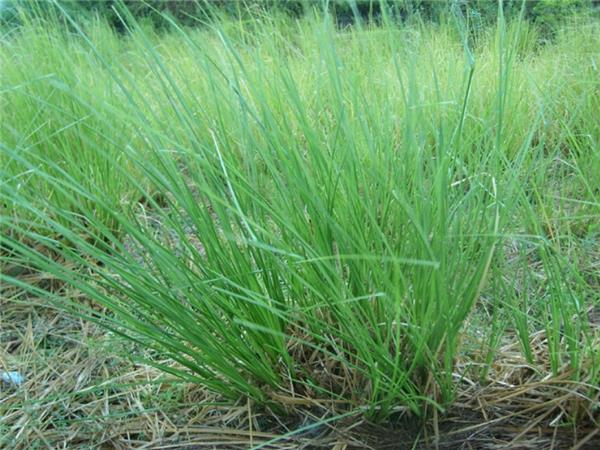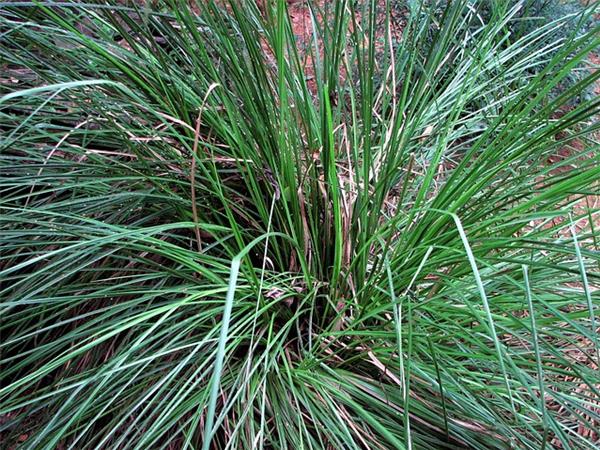What are the uses of vetiver grass?
It is not too much to say that Gyabgon grass is one of the most useful grass species, because its function is so extensive that "only you can't think of it, you can't do it without it". Let's take a look at it.

The effect of vetiver
1. Prevent landslides: plant vetiver on the slope and form a tight hedge when the grass is mature. When Rain Water flows down the slope, the sediment in the water meets the hedge, and Gyabgon grass blocks the mud and slows down the flow of water. In this way, more water will have time to seep into the bottom of the soil, and the remaining water will seep through the Gyabgon grass, and the roots of vetiver grass can penetrate to a depth of 3 meters, which can effectively stabilize the soil and prevent the soil from being washed away. at a certain point, the sediment in front of the Gyabgon grass continues to increase, and finally forms a natural barrier. At the same time, Gyabgon grass can also be planted on the back and slope along the road to prevent the shoulder from collapsing. Gyabgon grass stabilizes the soil and changes the waterways of the roadbed.
2. Treatment and control of pollution: vetiver is tolerant to salt and alkali and still behaves normally when the concentration of exchangeable salt reaches 33%. The acid soil of pH3.8 can still grow normally when the concentration of AL3+ is as high as 68% (15% is quite high for general crops). It can grow normally under the conditions of high concentration of arsenic, lead, cadmium and aluminum, and can be used for the treatment of acid sulfate soil. After the soil is contaminated by heavy metals, radioactive materials or other industries, research facilities, underground landfills and wastes, planting vetiver is very beneficial to soil reclamation. Gyabgon grass is also an excellent plant for purifying nutrient-rich water, and it has great application potential. In addition, vetiver is also used to purify landfill leachate, especially in pig farm feces.

3. Restoration of degraded soil: Gyabgon grass is planted in rows on the slope of degraded silicon red soil, and the surface layer of silicon red soil has been washed and eroded, so the soil is dry, hard and lack of vegetation cover. The planting of vetiver reduces the rate of soil loss, allows water to permeate into the deep soil, and provides sufficient water for the growth of trees. According to the researchers, the hard soil layer, such as rock, is made up of broken sand, clay, limestone and minerals, while the root of vetiver can pass through the hard stone layer, breaking it into pieces and increasing soil moisture.
4. Feed development and utilization: vetiver is a kind of edible grass for livestock, which is eaten by cattle and sheep when they are young. Studies have shown that the stems and leaves of Gyabgon grass contain proteins, amino acids, lipids and mineral elements needed by animals, which can be used as feed raw materials for development and utilization. In addition, the waste of Gyabgon grass is also rich in nutrients, including high-quality bacterial protein, which can also be used as high-quality bacterial protein feed. According to the study, the crude protein content of Gyabgon grass is 7.31%, crude fat is 1.97%, crude fiber is 34.5%, which is higher than rice straw (crude protein 4.5%, crude fat 1.46%, crude fiber 32.4%). The feeding rate of Gyabgon grass is more than 90.9%, and the feeding rate of fish is as high as 71%.

Planting method of vetiver grass
1. Soil preparation: vetiver seedlings are raised with neither bed nor ridge (flat method). Weeds, stones and other debris on the ground should be cleared before planting, and generally the land should not be reclaimed on the beach; when planting in other places, the depth of 15-20 meters should be completely reclaimed to change the soil structure, enhance water permeability, improve the ability of storing water and preserving soil moisture and drought resistance, which is beneficial to the growth of Gyabgon grass line. When planting, the holes were excavated in strips along the contour lines, the distance between the rows of plants was 30 × 30 cm, the hole was dug into a "V" shape, and the depth of the hole was 10-15 cm.
2. Planting: trim the grass seedlings to the root length of 10 cm and the stem and leaf length of about 20 m. When dividing the seedlings, 3-5 plants are broken off together and planted in the hole, and then filled and compacted, so that the roots are closely combined with the soil, so as to facilitate survival. The planting time is from March to June every year, and the places with good irrigation conditions can be postponed as appropriate. Generally, the survival rate of planting in March is the highest and the growth is better. Planting after July, due to high temperature and uneven rainfall, the survival rate will decline, and it will take more man-hours in management. In addition, it should be noted that there are 2-3 seedlings per hole when planting in March and 4-5 seedlings per hole after June.
3. Fertilization: Gyabgon grass seedling field can grow well with a small amount of nitrogen fertilizer. There is no need to apply fertilizer before planting, when Gyabgon grass seedlings turn green, drill a 15-meter deep hole about 50 meters away from the seedlings, and apply urea at a rate of about 20 kilograms per mu. As a long-term designated nursery, organic fertilizer should be applied.

In addition to the role of vetiver introduced in the above content, Gyabgon grass can also play the role of extracting essential oils, papermaking, weaving handicrafts, utilization of fungus grass and medicinal health care. It is a kind of grass with very high economic value. In addition, it can also be used to lay lawn, and it is a kind of grass with multiple functions.
In addition to the role of vetiver introduced in the above content, Gyabgon grass can also play the role of extracting essential oils, papermaking, weaving handicrafts, utilization of fungus grass and medicinal health care. It is a kind of grass with very high economic value. In addition, it can also be used to lay lawn, and it is a kind of grass with multiple functions.
Related
- Wuhan Hospital Iron Tree Blooming Result Was Instantly Frightened by the Gardener Master
- Which variety of camellia is the most fragrant and best? Which one do you like best?
- What is the small blue coat, the breeding methods and matters needing attention of the succulent plant
- Dormancy time and maintenance management of succulent plants during dormancy
- Minas succulent how to raise, Minas succulent plant pictures
- What are the varieties of winter succulent plants
- How to raise succulent plants in twelve rolls? let's take a look at some experience of breeding twelve rolls.
- Attention should be paid to water control for succulent plants during dormant period (winter and summer)
- Watering experience of twelve rolls of succulent plants
- Techniques for fertilizing succulent plants. An article will let you know how to fertilize succulent plants.



